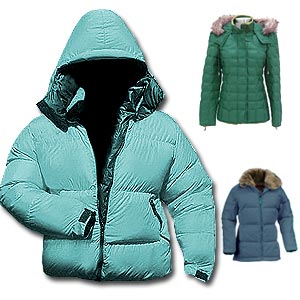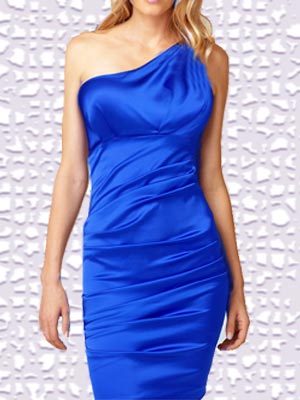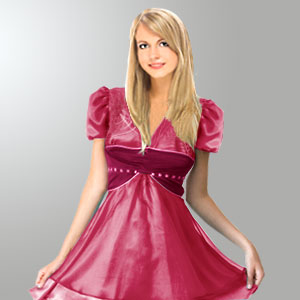Parka

Parka is a waist or hip-length cold weather jacket that is popular due to its ease of use and maintenance. Also termed as anorak, a parka is generally lined with fur or fun fur in order to protect the face and body from a combination of freezing temperatures and wind.
Selecting a parka
The word anorak (from the Greenlandic Inuit anorak) is mainly used in Britain. In general, a parka specifically implies a pullover jacket without a zipper or button opening. The word parka is now nearly the universal name in the United States and Canada. In North America, a parka is a waterproof jacket with a hood and drawstrings at the waist and cuffs.
A parka is a knee-length cold-weather jacket or coat; typically stuffed with down or very warm synthetic fiber, and having a fur-lined hood. Parkas are often treated with a waterproofing agent on the outside to prevent moisture from seeping in. There are a variety of parkas, from acrylic fiber to fur and fun fur. Be careful while choosing one, as the selection mainly depends on the usage of the parka. Listed below are some basic features to be considered before buying a parka.
- If you are planning to go trekking or backpacking, look for a parka that suits the climatic conditions.
- Synthetic fibers are often hypoallergenic and dry quickly. Parkas made of synthetic fibers are more affordable too.
- Check for a need to apply additional sealant on seams and zippers.
Waterproof and breathable parkas: This could be used in warmer snow areas, such as Australian resorts. These parkas come with a waterproof outer layer as the outer conditions where you use them tend to be wetter because of warmth. You can also find breathable parkas, because as you exercise you sweat and if the sweat cannot escape, it condenses and you get wet from the inside.
A waterproof and breathable parka comes generally in fiber and makes you feel comfortable. Fabrics are rated, typically with 2 numbers in thousands. One is for breathability and other for waterproofness. As a thumb rule, higher the number more effective is the fabric. For instance a parka with a rating of 5000 should be waterproof for years and of course, breathability will be high.
Insulated or Shell: A shell parka is generally preferred because it can control temperature by layering, without taking the insulating qualities of the garment into account. Shell parkas are waterproof and windproof without padding for insulation. An insulated parka means one less item of clothing.
An insulated parka can be too hot for spring skiing, whereas a shell parka may be just right, since it allows you to add additional layers whenever you get colder. There are shell parkas that come with linings that can be zipped in or out. This may be good, but it doesn't make any difference to a shell with a separate insulating layer. Shell parkas are of good use when you are away from snow.
Sealed Seams: This is an important factor to be noted in waterproof parkas. In a waterproof garment chances are there that the waterproof layer may get pierced by thousands of tiny holes while stitching the panels of the garments. Water will penetrate through these tiny holes thus making you uncomfortable. Manufacturer's overcome this by placing a sealant over the seams on the inside of the garment.
This sealant could either be a narrow tape glued over the seam, or a line of gunk along the seam that looks like silicon sealant. In a padded parka, the seam sealing may be hidden due to insulation. Though seam sealing are effecting, it might fail at times. While buying a parka, remember to shop for one with minimum number of panels by which you either reduce the number of seams or could avoid failed seam sealing.
Hoods and Collar: A good hood or collar must give you a place to hide in bad weather while at the same time should not impede your visibility. Some parkas have hoods that are attached by zips or press studs. Others have hoods that tuck into a pouch in the collar. The secret to a good collar is that it should be high enough to tuck your nose into. Some collars, and most hoods, have drawstrings to tighten the apertures and stop wind and precipitation penetrating. The collar should be big enough that you can fit a neck gaiter inside it without the collar being uncomfortably tight.
Wrist Closures: While you shop for a parka, look in for the one that has tight but comfortable wrist closures so that cold waves don't get in. You can tuck your gloves inside your parka; ensure that your parka's wrist has enough room for this as well. Storm Flaps: These are cloth closures on the main zip. They can be in front of the zip, or one can be behind. One flap will not be enough. Two overlapping flaps are necessary to keep inclement weather out.
Powder Skirts: Most parkas come with an elasticized internal skirt near the bottom. They form a seal around the top of the pants to prevent snow from getting inside the parka. While some parkas don't have an internal skirt, they have an elasticized drawstring at the waist. Though the drawstrings perform the same function they are not as effective as the internal skirts.
Washing your parka
Be careful while washing your parka. Follow the instruction given inside the flap of your parka. Don't ever dry clean your parka. Use the gentlest option in your machine and ensure to use a mild detergent or special sports detergent for your fabric.
Top of the Page: Parka
Tags:#parka
 Shopping Guide
Shopping Guide How to Dress Slimmer
Petite Dresses
Lace Sheath Dress
Dressy Tops for Women
Pea Coats for Women
Church Suits
Cocktail Dress
Little Black Dress
Prom Dress
Semi Formal Dress
Women's Skirt
Women's Fashion - Women's Apparel
Fashion Apparel for Women
Tummy Tuck Jeans
Women Designer Jeans
Tank Tops
Cashmere Sweater
Mohair Sweater
Winter Wedding Dress
Summer Wedding Dress
Winter Boots
Winter Coat
Dress for Bride's Mother
Baby Christening Gown
Silk Scarf
Pashmina Scarves
Halter Dresses
Women Undergarments
 Sheer Camisole
Sheer Camisole Underwire Bra
Body Shapers for Women
Women's Undergarments
Sheer Lingerie
Women Sleepwear
Women Casual Wear
 Travelling Clothes for Women
Travelling Clothes for Women Fall Wedding Colors
Fall Fashion Trend
Jogging Clothes
Leggings
Tights
Parka
Corset
Summer Clothes
Summer Dress
Summer Long Dress
Sundresses
Vintage Evening Dress
Wedding Veil
Beach Wedding Dress
Women's Hosiery
Nylon Stockings
Maternity Apparel
Maternity Jeans
Athletic Apparel
Leather Apparel for Women
Indian Saree Shopping
How to wear a Saree
Halloween Costume
Womens Tunic Dress
Sequin Dresses
Wrap Dress
Charmeuse Dress
Ruffle Dress
Top of the Page: Parka
Popularity Index: 100,888

